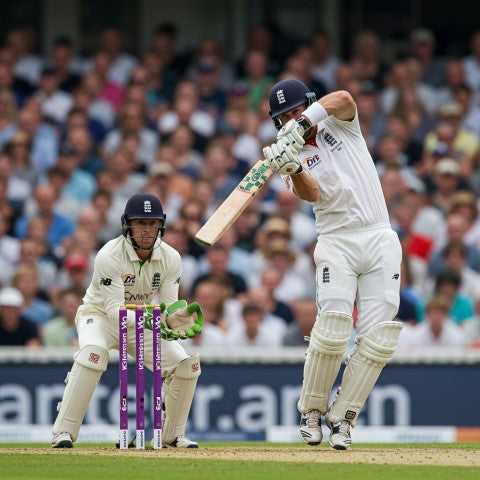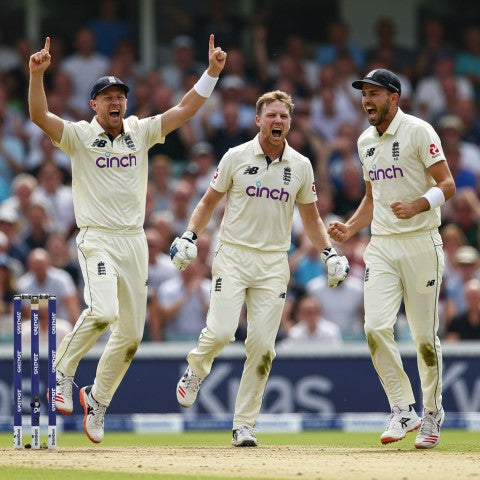Saliva Ban Lifted: How IPL 2025 is Returning to Traditional Ball Maintenance

The ban on saliva for ball maintenance has fundamentally reshaped cricket, particularly in the high-stakes realm of T20. Initially a pandemic-era health measure, this restriction has ignited fierce debate about its long-term impact on the game. Introduced as a health measure during the height of the COVID-19 pandemic, the restriction radically altered the way bowlers operated, particularly in formats like T20 where every delivery can shift the momentum of a match.
With IPL 2025, a new chapter begins. The saliva ban has officially been lifted, marking a return to one of cricket’s oldest and most nuanced practices. While the pandemic reshaped the rules of engagement for obvious reasons, the decision to reinstate saliva use reflects not only improved global health conditions but also a desire to restore a key tactical element to the game.
This article explores the history of the ban, the reasoning behind its reversal, and how it will reshape the dynamics of bowling, match tactics, and player preparation in the world’s most-watched T20 league.
1. Background of the Saliva Ban
Back in 2020, the cricketing world was forced to make rapid adjustments. Among them was the prohibition of saliva on the cricket ball—previously a common and accepted method for generating swing. The decision was spearheaded by the International Cricket Council (ICC) and adopted by boards worldwide, including the BCCI for the IPL.
Saliva was deemed a potential health risk, particularly in a team sport involving close contact and shared equipment. While sweat was still allowed, many bowlers found it less effective, especially in dry or cool conditions where perspiration was minimal.
The impact was immediate. Fast bowlers—particularly those who relied on swing—struggled to extract movement. Without the ability to maintain one side of the ball using saliva, reverse swing almost vanished, and the white ball’s natural deterioration became harder to manage. As a result, the balance between bat and ball tilted even further in favour of power-hitting batters.
2. Decision to Lift the Ban in IPL 2025
The decision to allow saliva again wasn’t made in isolation. Ahead of IPL 2025, a pre-season captains' meeting was convened, and one of the most discussed topics was ball maintenance. A majority of captains expressed a clear preference for reintroducing saliva as an option, arguing that it had been an essential tool for bowlers and deserved reinstatement now that public health risks had lessened.
The BCCI echoed this sentiment, stating that after multiple medical reviews and consultations with health advisors, it felt confident in lifting the ban.
“Cricket is as much about tradition as it is about evolution,”
a BCCI spokesperson noted. “With improved health conditions and proper precautions, we feel the time is right to restore this aspect of the game.”
The decision represents a return to normalcy, allowing bowlers to once again use every trick in their arsenal to outthink and outfox batters.
3. Implications for Bowlers
For bowlers—especially pacers—the reintroduction of saliva is a game-changer. One of the most significant benefits is the ability to produce reverse swing, particularly on abrasive Indian pitches during the final overs of an innings.
Reverse swing relies on maintaining a clear distinction between the shiny and rough sides of the ball. Saliva, when applied and polished correctly, helps preserve the smoother side for longer, enabling late movement that can deceive even well-set batters.
Prominent IPL bowlers have welcomed the decision. Jasprit Bumrah called it
“a positive step that brings back skill and subtlety to death bowling.”
Meanwhile, Mohammed Shami noted that it allows bowlers to compete more fairly, especially when defending totals in high-scoring games.
With saliva back, bowlers can mix swing, seam, and pace more effectively—reviving some of the old art that had been lost in recent seasons.
4. Impact on Match Dynamics
One of the most interesting implications of this rule change is its potential to rebalance the bat vs ball equation. In recent seasons, IPL matches have routinely seen scores climb past 200, with bowlers often reduced to damage control roles. By allowing saliva, the league gives bowlers a legitimate edge once more.
Teams are likely to alter their strategies. Expect bowling units to place greater emphasis on swing bowling again, particularly in the powerplay and death overs. Field placements might shift accordingly, with more slips in early overs and square-leg traps in play for reverse swing specialists.
Tactical depth could also return. Captains may begin to favour bowlers who can manage the ball's condition across spells, rewarding those with finesse over pure pace. The spectacle could become more varied and unpredictable—a welcomed shift for fans seeking a more balanced contest.
5. Health and Safety Considerations
While the ban has been lifted, the IPL is not turning a blind eye to ongoing health and hygiene concerns. The decision was based on current public health guidance, which indicates that the risk of viral transmission through saliva is now minimal under controlled environments.
However, precautionary measures remain. Teams are encouraged to enforce voluntary hygiene protocols, and players may still opt out of using saliva based on personal comfort. Additionally, each franchise must conduct its own risk assessments to determine how and when saliva should be applied during matches.
Importantly, umpires and match referees will continue to monitor ball handling closely. This ensures that while tradition returns, the IPL maintains its reputation for high standards and professional conduct.
6. Comparisons with Other Leagues
To understand the broader context of the IPL’s decision, it’s helpful to look at what other major cricket leagues and boards are doing around the world.
Here’s a breakdown:
| League/Board | Saliva Ban Status (2025) | Comments |
|---|---|---|
| IPL (India) | Ban lifted | Full return of saliva allowed with hygiene protocols in place |
| Big Bash League (Australia) | Ban remains | Cricket Australia prioritising public perception and caution |
| The Hundred (UK) | Under review | ECB conducting trials before making a final decision |
| PSL (Pakistan) | Ban lifted (early 2024) | Similar rationale to IPL—based on updated health advice |
| CPL (West Indies) | Ban lifted | Saliva use allowed since late 2023 |
| International (ICC) | Partial lifting in select bilateral series | Still not fully reinstated; left to discretion of national boards |
While some boards remain cautious, the IPL is clearly leading the way. As the world’s biggest T20 league, its actions often set the tone for global cricket. It wouldn’t be surprising if other leagues followed suit in the months ahead.
7. Player and Expert Opinions
The reaction from the cricketing fraternity has been largely positive. Dale Steyn, a legendary fast bowler and now a coach in the league, tweeted that
“swing is back, and so is the beauty of skilled fast bowling.”
Waqar Younis echoed the sentiment, noting that
“you can’t beat the thrill of seeing a batter’s stumps fly from a late-swinging yorker.”
Among active players, reactions have ranged from excitement to caution. While some pacers are thrilled to reclaim a lost skillset, a few batters have voiced concerns about potential over-reliance on the method, especially in drier venues.
There are also health-conscious players who, though cleared medically, remain reluctant to use saliva. Some coaches have said that teams may allow individuals to opt in or out, depending on their comfort levels.
Analysts have pointed out that this reintroduction must be managed with care. One former umpire mentioned that while the move is “a welcome nod to cricketing heritage,” clear enforcement will be needed to avoid over-polishing, tampering accusations, or confusion over usage limits.
Saliva Ban Lifted in IPL 2025: What It Means for the Future of T20 Cricket
The lifting of the saliva ban in IPL 2025 marks a significant milestone—not just in the return to pre-pandemic cricket, but in restoring a tactical layer that bowlers have sorely missed. It promises to rebalance contests, elevate skill-based bowling, and diversify match narratives.
By following updated health guidelines while maintaining a level of precaution, the IPL has made a measured and thoughtful decision. It listens to its players, adapts with the times, and leads global cricket innovation—all without losing sight of the game's core traditions.
Looking ahead, this move may well encourage other leagues and governing bodies to reconsider their own positions. As T20 cricket continues to evolve, the blend of tradition and innovation seen in IPL 2025 could become the template for the sport’s future—where both bat and ball have their fair share of glory.





Leave a comment